A list of the top ten largest whale species ranked in order of mass, from lightest to heaviest. Discover amazing facts about the world’s largest animals!
Page Index
- What Is The Largest Whale Species?
- What Is A Whale?
- List Of Ten Of The Largest Whale Species
- Discover More About Whales On Active Wild
Unless specified, all weights on this page are given in short (US) tons. (1 short ton = 2,000 lb. = 0.907 metric tonne = 0.893 long ton)
What Is The Largest Whale Species?
The largest whale species is the blue whale (Balaenoptera musculus). Not only is the blue whale the largest living whale, but it is also the largest species ever to have lived on Earth. The longest recorded blue whale measured 30 meters (98 ft) from nose to tail, and the heaviest recorded was 219 tons (199 metric tonnes / 196 long tons).
Even Bryde’s whale, the least massive whale in this list of the largest whale species, is around two and a half times heavier than an African bush elephant – the world’s largest land animal!
What Is A Whale?
A whale is a marine mammal that, like all mammals, breathes air and feeds its young with milk. Whales are members of a group of marine mammals called cetaceans. This group is divided into two groups: the baleen whales (the parvorder Mysticeti), and the toothed whales (the parvorder Odontoceti).
- Baleen whales lack teeth. They feed using comb-like structures known as baleen plates in their mouths to filter prey such as krill (a small crustacean) and small fish from the seawater.
- Toothed whales have teeth and locate their prey using echolocation.
In the past, whales were hunted for their oil, meat, bones and blubber, which were all valuable commodities. The populations of all of the whales listed below were brought to the brink of extinction due to whaling activity. Many have never recovered.
Today, all of these whales are protected and may only be hunted in exceptional circumstances. The numbers of most species are slowly recovering, although many are killed each year after being struck by ships or by becoming entangled in fishing gear.
List Of Ten Of The Largest Whale Species
(Conservation status of each species provided by the IUCN.)
10. Bryde's Whale
- Scientific name: Balaenoptera brydei
- Family: Balaenoptera
- Conservation status: Least Concern
- Maximum weight: 28 tons
- Maximum length: 46 ft (14 m)
- Where found: Worldwide in tropical, sub-tropical and warm temperate waters (between 40° south to 40° north).
Bryde’s whales have thin, pointed flippers and a hooked dorsal fin that protrudes about two-thirds of the way along the back. Because of their (relatively) small size, Bryde’s whales were not the main target of whalers until the 1970’s, when stocks of larger whale species had been depleted.
The species is a member of a group of baleen whales known as rorqual whales. These whales have an expandable mouth and throat pouch, enabling them to take huge gulps of seawater from which they can filter their prey. Rorqual whales can be identified by the deep folds of skin running from their mouths to their stomachs.
Bryde’s whales feed on fish such as sardines, anchovies and herrings, and on crustaceans such as krill and shrimps.
Bryde’s whales, like all baleen whales, have two blowholes through which they breathe.
9. Sei Whale
- Scientific name: Balaenoptera borealis
- Family: Balaenopteridae
- Conservation status: Endangered
- Maximum weight: 31 tons
- Maximum length: 64 ft (19.5 m)
- Where found: Most oceans but not in polar or tropical waters. It inhabits open ocean areas.
The sei whale is a uniform, dark grey color with light grey and white blotches on its undersides. It is the third-longest species of baleen whale (after the blue whale and the fin whale). It feeds on small crustaceans and other planktonic animals, with adults consuming an average of 2,000 lb. (900 kg) of food per day.
The sei whale is easily confused with its relative, Bryde’s whale. The most reliable way to identify a sei whale is by its 300–380 pairs of ashy-black baleen plates.
Sei whales were hunted commercially for their meat and oil; it is estimated that today’s worldwide population of 80,000 represents only a third of the pre-whaling population. The species is still endangered.
The fast-swimming Sei whale has been called the ‘cheetah’ of the open ocean. It can reach 31 mph (50 km/h) over short distances.
8. Humpback Whale
- Scientific name: Megaptera novaeangliae
- Family: Balaenopteridae
- Conservation status: Least Concern
- Maximum weight: 44 tons
- Maximum length: 49 ft (15 m)
- Where found: Oceans and seas around the world, from the Arctic ice edge to the Antarctic ice edge.
The humpback whale is one of the most familiar whale species, and this long-finned, distinctively-shaped whale is often seen breaching, spy-hopping, tail-slapping and fin-slapping at the surface of the water.
The humpback’s genus name is Megaptera, which means “big wings”. The name refers to the species’ long pectoral (side) fins, which can reach up to 6m in length.
Male humpbacks are known for their long, complex and very loud songs. Each song may last for up to 20 minutes and may be repeated many times, sometimes for up to 24 hours.
Whales do not have vocal cords and do not need to exhale to make sounds. The humpback is known to produce its songs using a larynx-like structure in the throat, but exactly how it does this is not yet fully understood.
A baleen whale, the humpback feeds by filtering small animals such as krill and fish from the seawater. It is known to round up its prey using “bubble nets”. This hunting technique involves the whale blowing bubbles around shoals of fish, thereby forcing the prey animals into large groups which can be easily swallowed.
Due to whaling, the world population of humpback whales was reduced to around 5,000 individuals – around a tenth of its original size. The species has been protected since 1966, and the population has since risen to an estimated 80,000 individuals.
Although humpback whales still face a number of threats, including ship strikes, entanglement in fishing nets, and noise pollution that interferes with their communication, they now have the conservation status of “Least Concern”.
- You can find out more about humpback whales on this page: Humpback Whale Facts
7. Gray Whale
- Scientific name: Eschrichtius robustus
- Family: Eschrichtiidae
- Conservation status: Least Concern
- Maximum weight: 45 tons
- Maximum length: 49 ft (15 m)
- Where found: North Pacific Ocean, along the west coast of North America and the east coast of Asia.
Gray whales are baleen whales that feed mostly in the coastal waters of the northern Pacific Ocean. The species migrates between their feeding grounds in the north and the warmer waters to the south of their range, where the females give birth to their calves.
As well as feeding on plankton and small fish in the open ocean, these large whales are known to feed on crustaceans and other sea organisms that live in the sand in shallow, coastal waters.
In order to capture this prey, the gray whale dives down to the ocean floor, rolls on its side and sucks up water and sediment. It then expels the water through its cream-colored baleen plates and swallows the prey. Feeding whales leave a trail of sediment and hollows in the sea bed from which they have taken mouthfuls of sand.
The grey whale’s slate-gray skin is marked with numerous white blotches caused by parasites that attached themselves to the whale’s body. The species lacks a dorsal fin.
Females give birth to a single calf every two years. The calf is born tail first and weighs about 1 ton at birth. The lifespan of a gray whale is estimated to be as long as 70 years.
Gray whales migrate each year from their summer feeding grounds off Alaska to the warmer waters of Baja California. With a distance of 12,000 mi (19,000 km), this round trip is the longest migration of any mammal.
- You can find out more about gray whales on this page: Gray Whale Facts
6. Sperm Whale
- Scientific name: Physeter macrocephalus
- Family: Physeteridae
- Conservation status: Vulnerable
- Maximum weight: 88 tons
- Maximum length: 68 ft (20 m)
- Where found: Open oceans around the world, but preferring ice-free waters that are at least 3300 ft (1000 m) deep.
The sperm whale, along with the orca, beaked whales, dolphins and porpoises, belongs to the parvorder Odontoceti – a group otherwise known as the “toothed whales”. A sperm whale has between 18 and 26 conical teeth on either side of its long, narrow bottom jaw (the top jaw is toothless).
With a maximum length of 68 ft (20 m), the sperm whale is the largest toothed whale.
Sperm whales are known to dive to astounding depths (up to 7,382 ft / 2,250 m) while hunting. Their prey includes giant squids, colossal squids, octopuses and rays. A dive may last as long as an hour. Post-mortem examinations have found as many as 18,000 squid beaks in the stomach of a single whale.
Sperm whales produce a waxy substance known as ambergris to help the sharp squid beaks pass through their intestines without causing damage. This sweet-smelling substance is a traditional ingredient of perfume.
Sperm whales, like other toothed whales, use echolocation to find their prey. Sperm whales have complex spermaceti organs on top of their skulls. These organs produce a waxy liquid that helps the sperm whale produce the loud clicking sounds used in echolocation.
Spermaceti liquid, as well as blubber from sperm whales, was used in the manufacture of cosmetics, soap, candles, lamp oil and lubricating oil. Sperm whales were exploited for these products and more than 1 million were killed by whalers.
Today, the species’ world population is estimated to be around 300,000 individuals. Its conservation status is Vulnerable.
Fun fact: The sperm whale has the largest brain (average of 17 lb. / 7.8 kg), the longest digestive system (around 980 ft / 300 m) and makes the loudest noise of any animal!
You can find out more about the sperm whale on this page: Sperm Whale Facts
5. Southern Right Whale
- Scientific name: Eubalaena australis
- Family: Balaenidae
- Conservation status: Least Concern
- Maximum weight: 99 tons
- Maximum length: 60 ft (18 m)
- Where found: In southern hemisphere oceans, near continents and islands. They avoid warm, tropical waters.
The southern right whale is one of three right whale species, all of which look very similar (the three were once considered to be the same species). The southern right whale is a uniform dark color with white callosities – hardened patches of skin – on its head. The callosities are unique to each individual, and can be used as an identification aid by scientists.
Like all right whales, the southern right whale lacks a dorsal fin and has broad, relatively short pectoral (side) flippers. All right whales have a distinctive, arched mouth that begins above the eye.
Fun fact: Right whales were so-named by whalers because they moved slowly, had a lot of blubber and floated after they were dead. They were, therefore, the ‘right’ whale to catch.
Like many whale species, southern right whales feed in cold, Antarctic waters during the summer and migrate southwards in the winter to breed. A baleen whale, the southern right whale feeds by filtering food from the water using comb-like baleen plates in its mouth.
Southern right whales display a variety of surface behaviors, such as breaching, spy-hopping and tail-sailing. This, along with their docile nature and innate curiosity, makes them popular with whale-watching tourists.
The species was hunted almost to extinction during the early 20th century. Today there are estimated to be about 10,000 Southern right whales, and the species’ population is slowly increasing.
4. Bowhead Whale
- Scientific name: Balaena mysticetus
- Family: Balaenidae
- Conservation status: Least Concern
- Maximum weight: 100 tons
- Maximum length: 59 ft (18 m)
- Where found: Arctic and subarctic waters
The bowhead whale has a stout, rounded body and, apart from a white patch on the chin, is a uniform dark gray / black in color. It uses its massive head, which makes up a third of the length of its body, to break through the Arctic ice.
The bowhead whale lacks a dorsal fin, which may be an adaptation to living and swimming just under the surface ice.
A baleen whale, the bowhead has the largest mouth of any animal, and the longest baleen plates of any whale (9.8 ft / 3 m).
Bowhead whales have very thick blubber (up to 20 in or 50 cm) that protects them from the Arctic cold. This blubber is such an efficient insulator that the whales can overheat after strenuous activity and have to cool off by taking cold sea water into their mouths. Unfortunately, their blubber also made them a prime target for whalers.
Like right whales, bowhead whales are slow swimmers and are naturally buoyant. This made them perfect whales for commercial hunting; their meat, bones, oil and baleen were all in demand. The species’ global population was reduced to about 3,000 individuals by the early 1900s.
Today the bowhead is protected, and its numbers have increased. A small number are still hunted each year by native North Americans for their meat and blubber.
Fun fact: Bowhead whales are thought to be the longest-lived animal species on earth. In 2007, a bowhead with a harpoon head embedded in its body was caught off Alaska. The harpoon had been manufactured between 1879 and 1885, meaning that the whale was more than 125 years old when it died.
- You can find out more about bowhead whales on this page: Bowhead Whale Facts
3. North Atlantic Right Whale / North Pacific Right Whale
- Scientific name: Eubalaena glacialis / Eubalaena japonica
- Family: Balaenidae
- Conservation status: Critically Endangered / Endangered
- Maximum weight: 100 tons
- Maximum length: 61 ft (18.5 m) / 70 ft (21.3 m)
- Where found: North Atlantic Ocean / North Pacific Ocean
The North Atlantic and North Pacific right whales are two closely-related whale species. Both are larger than the related Southern right whale, and the average size of the North Pacific right whale is thought to be slightly larger than that of its North Atlantic relative.
The right whales are baleen whales that feed by filtering small crustaceans and other plankton from the water.
Each right whale has a unique pattern of white callosities (growths of thick skin) on its head. The callosities are inhabited by whale lice, which feed on the whale’s skin.
Right whales produce a high amount of blubber, and because of this were a prime target for commercial whalers.
In 1935, only an estimated 100 North Atlantic right whales remained. Even today, the entire population of North Atlantic right whales consists of only around 350 individuals. Of these, only around 100 are breeding females. The North Pacific whale is faring similarly poorly, with a population that may be even smaller than that of the North Atlantic right whale.
Scientists fear both species may be headed for extinction.
Although no longer hunted, right whales are threatened by ship strikes and entanglement in fishing gear.
2. Fin Whale
- Scientific name: Balaenoptera physalus
- Family: Balaenopteridae
- Conservation status: Vulnerable
- Maximum weight: 72 tons.
- Maximum length: 90 ft (27.5 m)
- Where found: Open waters of all oceans, between temperate and polar latitudes.
The fin whale is the second largest whale species. It is known as the “greyhound of the sea” due to the streamlined shape of its long, thin body (the only animal longer than a gray whale is the blue whale).
The species can be recognized by its long dorsal fin, from which it gets its name. The coloration of the lower jaw is unusual, being asymmetrical. The right side is white and the left side is black. The lighter color of the right side may be an adaptation for herding prey fish.
Like many whale species, fin whales spend the summer feeding in sub-polar waters before migrating south to warmer waters in the winter. They become physically mature at an age of around 25 years, and their lifespan may be around 90 years.
Fin whales were hunted commercially during the 20th century, and it is estimated that by 1997 only 38,000 individuals remained. Hundreds of thousands of these whales were killed in the southern hemisphere between 1905 and 1976.
Today, fin whales are protected, and their population has increased to around 100,000 individuals.
- You can find out more about fin whales on this page: Fin Whale Facts
1. Blue Whale
- Scientific name: Balaenoptera musculus
- Family: Balaenopteridae
- Conservation status: Endangered
- Maximum weight: 199 metric tonnes
- Maximum length: 98 ft (30 m)
- Where found: All oceans of the world. Some individuals migrate to the Southern Ocean in the austral summer to feed, and move northwards thereafter to breed. Others remain resident.
Blue whales are the largest animals ever to have lived on earth. They travel singly or in small groups throughout the oceans of the world, feeding on krill and other small organisms in the plankton.
The blue whale is a member of a group of baleen whales known as rorqual whales. A rorqual whale can be identified by the grooves of folded skin running from its mouth to its stomach. These folds enable the mouth to expand when the whale is feeding. A blue whale can take in up to 200 tons of water in one mouthful.
The deepest recorded blue whale dive is 1,033 ft (315 m), and the longest lasted for 15 minutes.
Blue whales were hunted almost to extinction in the early 1900s. After 1966, when all whale hunting was banned, the species’ population has slowly increased. Today, there are between 10,000 and 25,000 blue whales swimming in the world’s oceans. Like many whales, the blue whale is often fatally injured in collisions with ships.
- You can find out more about blue whales on this page: Blue Whale Facts
Related Pages: Discover More With Active Wild
- Discover all living species of whale on this page: All Whale Species with Pictures & Facts
- Are Whales Mammals? And If So, Why? Amazing Whale Facts
- Fun Facts On Whales: Interesting Information On Whale Species, Ecology, Related Animals & Conservation
- Ocean Animals: A List Of Animals That Live In The Ocean With Pictures & Facts – Plus FREE question sheet
- Mammal Facts: The Ultimate Guide To Mammals
- Types Of Mammals: Explore The Fascinating World Of Mammals
- Antarctic Whales: Whales In Antarctica

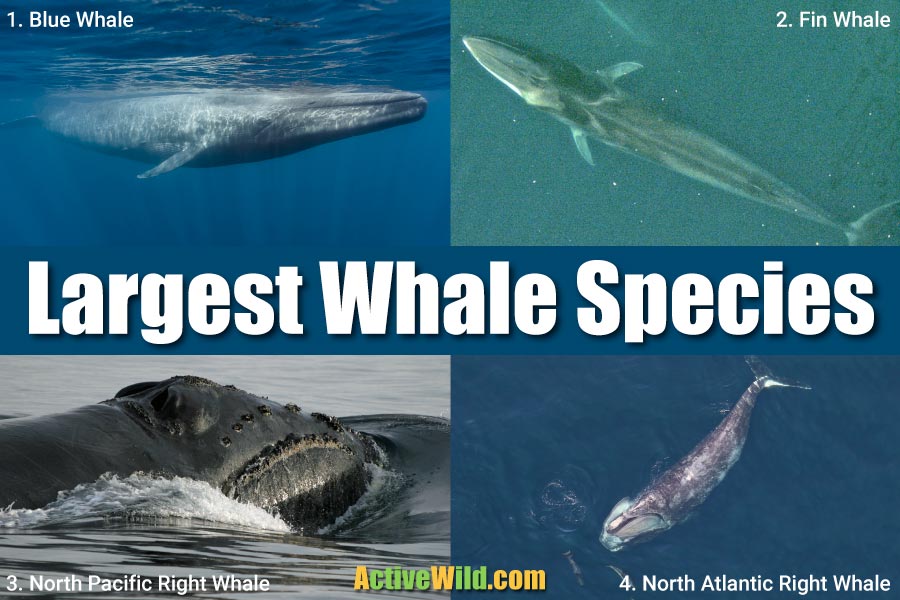

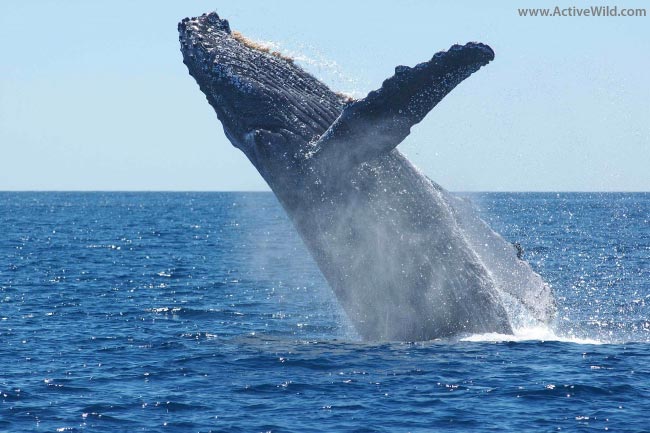
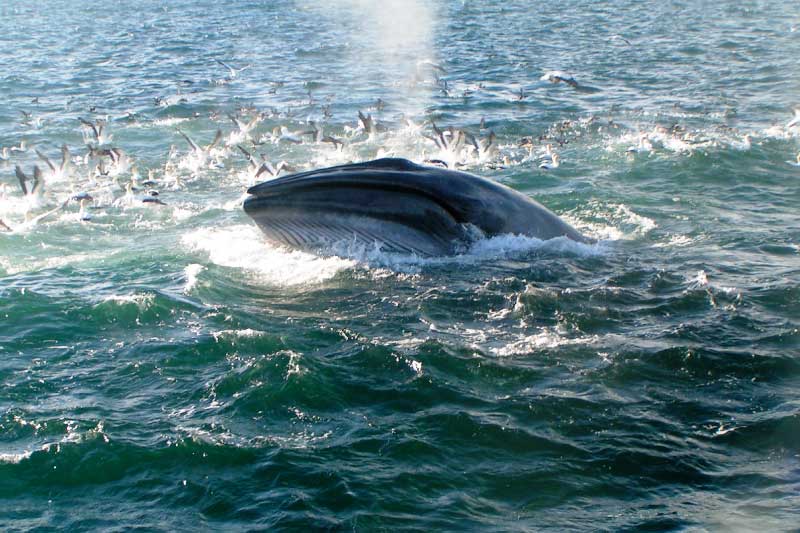

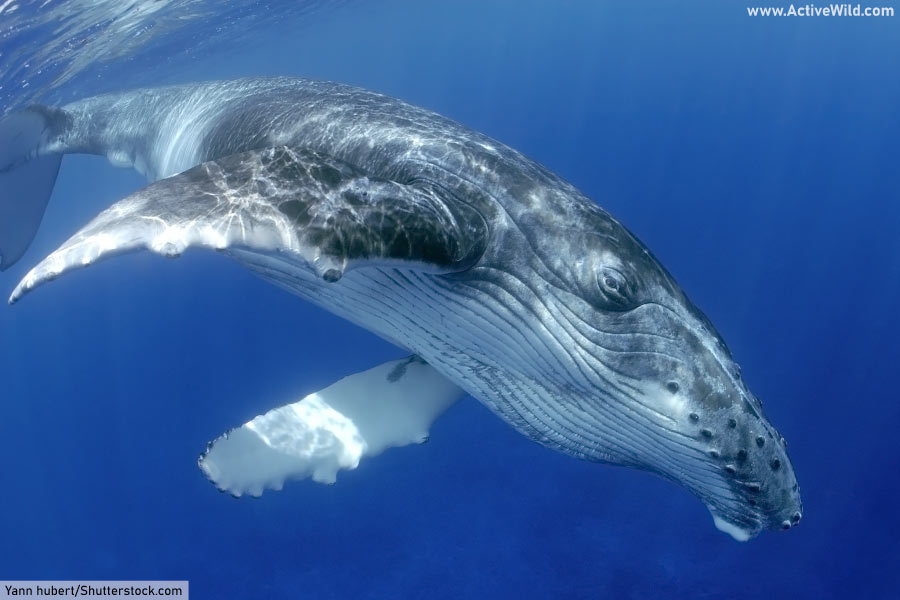
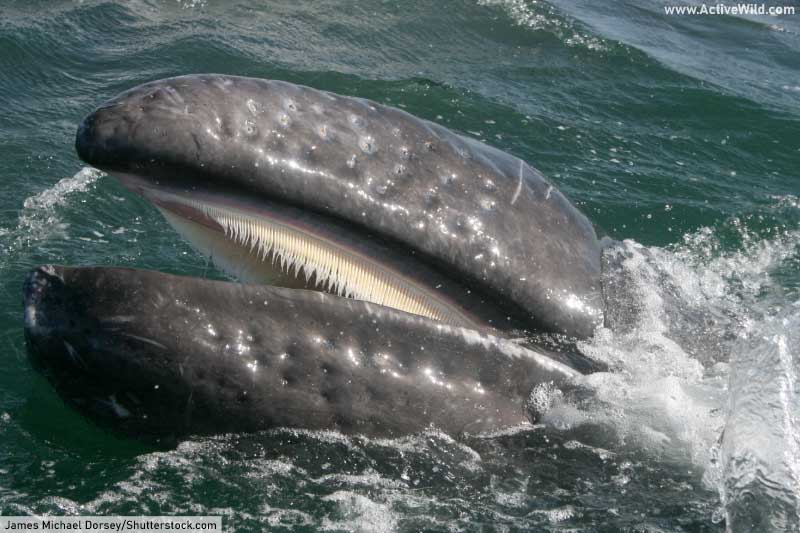
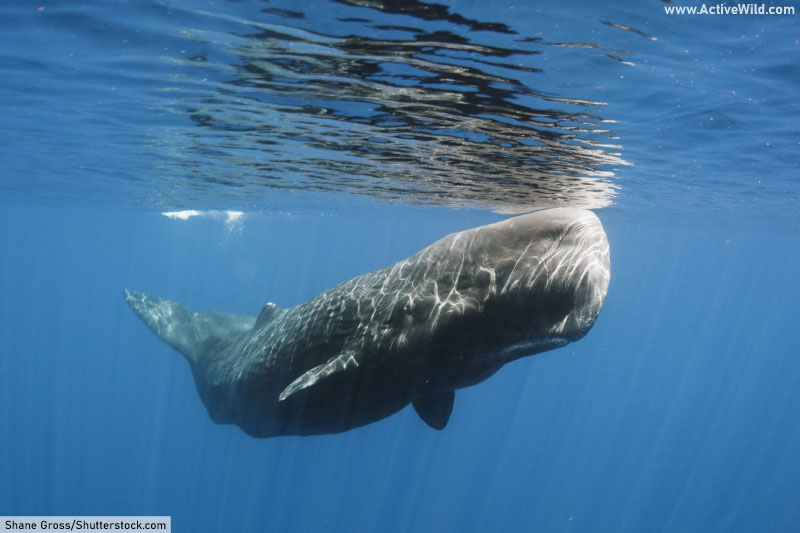


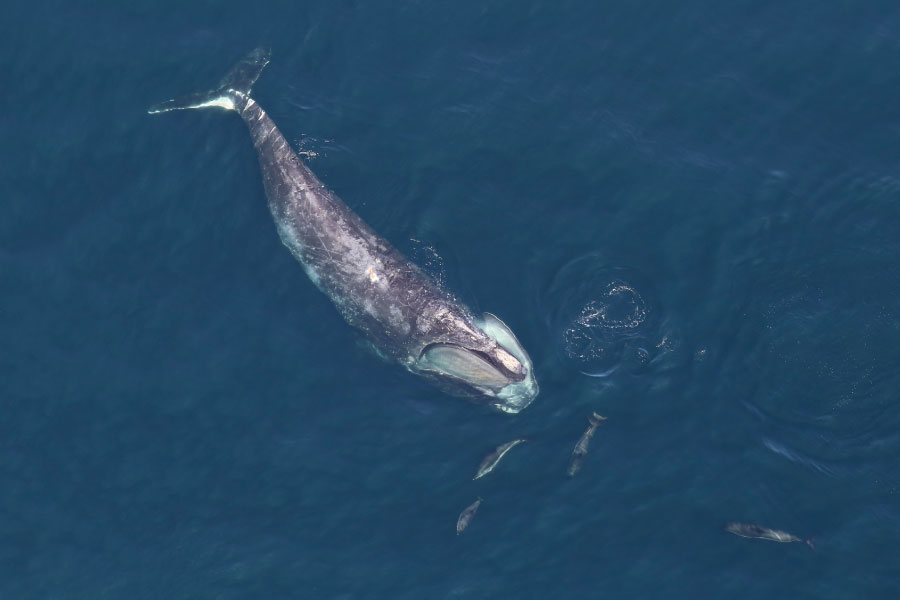
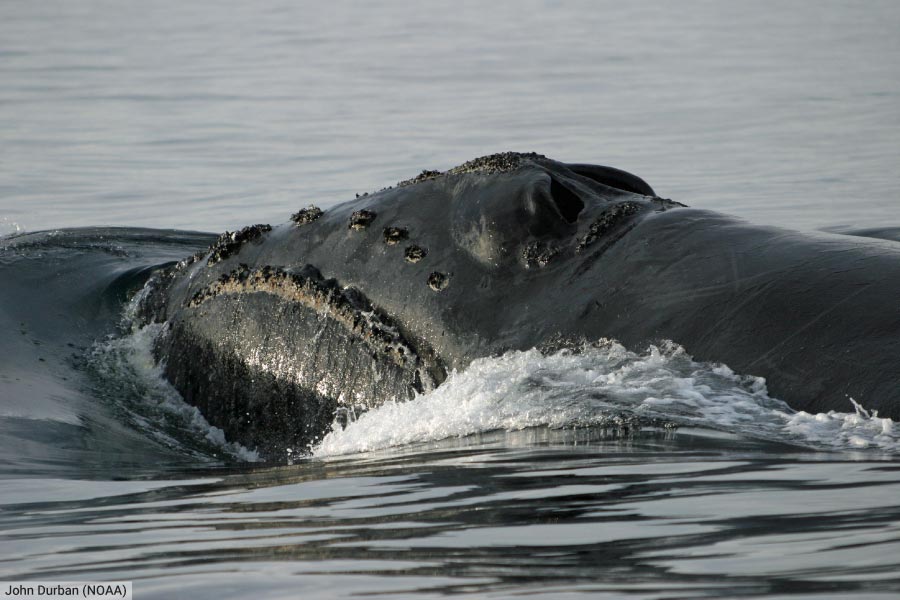
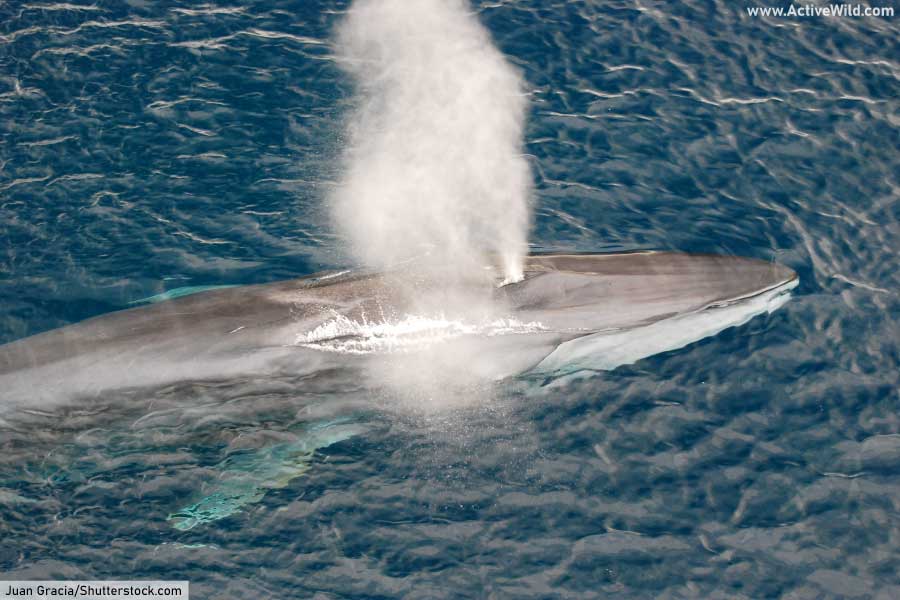
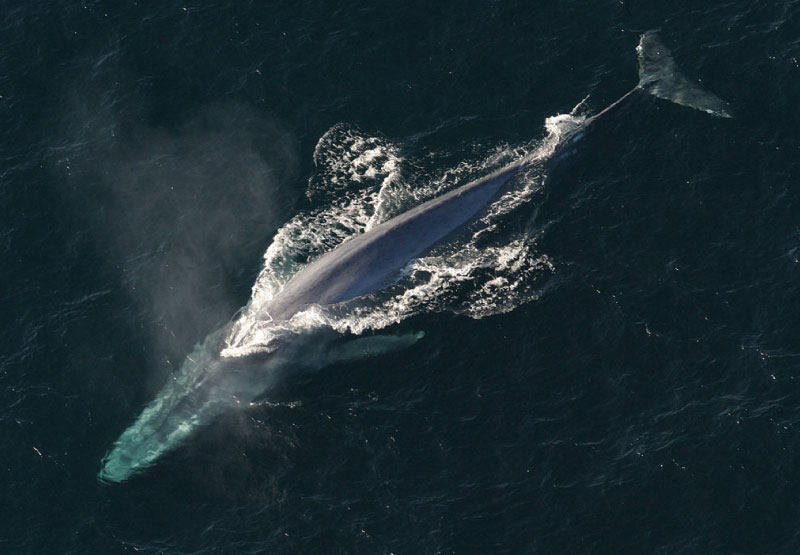

Absolutely Beautiful Who In The World Could KILL Something So Fantastically Beautiful 😪 Brakes My ❤️